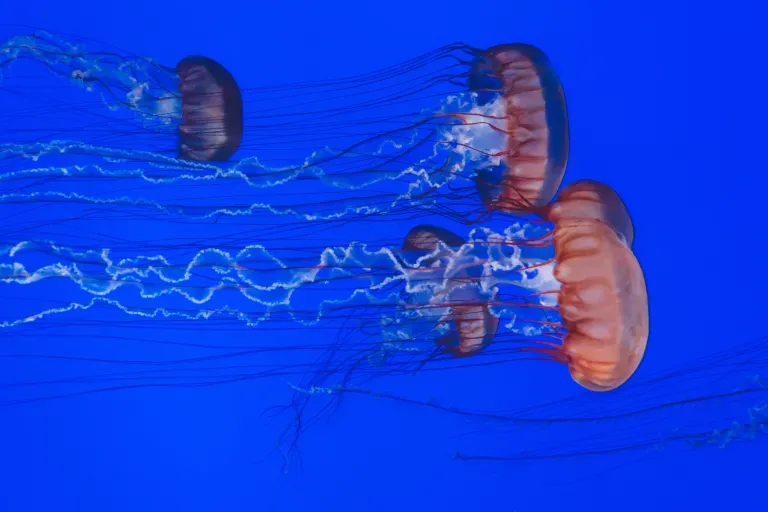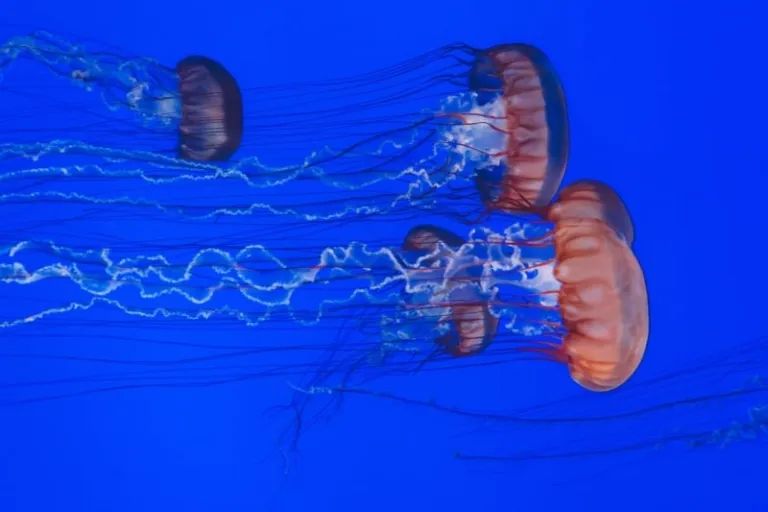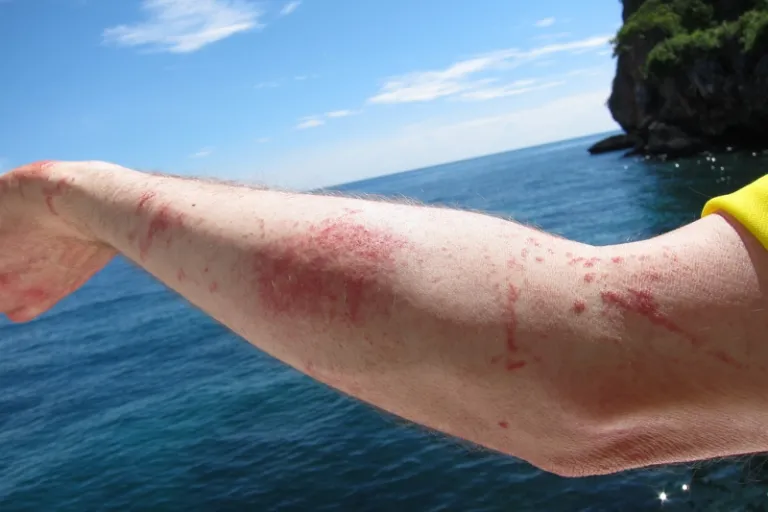The promise of new flavours beckons from Banawe.
First Aid Must-Knows: What To Do When a Jellyfish Stings

It’s any vacationer’s nightmare: A beach getaway takes a lethal turn with just a single jellyfish sting.
But this was exactly the tragedy that struck when a group of tourists on holiday in Caramoan, Camarines Sur lost a seven-year-old girl after she was stung by a box jellyfish last 26 Jul.
Filipino-Italian Gaia Trimarchi was vacationing in the Philippines with family and her swimming coach when the incident happened. According to the seven-year-old’s mother, Manette, Gaia was wading in the shallow waters of Sabitang Laya Island, the last stop in the group’s island-hopping itinerary. Gaia was collecting seashells when suddenly she shouted in pain, Trimarchi recounted.

They would later find out that the seven-year-old was stung by a box jellyfish — among the world’s deadliest jellyfish species. Unfortunately, neither the boatmen nor the island management had a first aid kit on hand. Trimarchi added that the boatmen even asked her if they had brought some vinegar, which locals would administer on jellyfish sting sites.
As an emergency measure, the boatmen applied gasoline to the sting site to remove the box jellyfish barbs stuck on Gaia’s leg. It took them 30 minutes to ferry the group back to Caramoan’s main beach. Gaia was then rushed to the Caramoan Municipal Hospital, where emergency medicine could have been administered, but was declared dead on arrival.
In an interview with ABS-CBN, attending physician Dr. Minerva Aguirre confirmed that a week before the mishap, another six-year-old girl died in the same waters because of a jellyfish sting.

In their defense, the boatmen said that they would inform tourists about the presence of jellyfish and sea urchins in the water, but that they failed to remind Trimarchi’s group during their last stop. The islands lacked warning signages as well.
Gaia was an award-winning swimmer back in Italy, where she grew up.
Also read: 35 Travel Disasters & Misfortunes that Could Happen to You
Boost tourist safety

The Department of Tourism, on the other hand, has issued a statement on the matter:
According to the United States National Science Foundation, 20 to 40 people die annually from jellyfish stings in the Philippines. Jellyfish numbers also change depending on the season.
DOT has also assured tourists that they have been working with regional directors to further improve tourism safety measures implemented by local government units.
Know first aid

It’s good that the government is now prioritising tourism safety, but tourists also ought to know what to do in case they get stung by a jellyfish. Here are a few first aid tips.
1. Get out of the water
When you suspect that someone has been stung by a jellyfish, get everyone out of the water to reduce the risk of others being injured. If there’s one jellyfish swimming around, chances are there are others not too far away.
2. Wash the sting site with vinegar
Vinegar is loaded with acetic acid, which generally neutralises jellyfish venom. If you were stung by a jellyfish, pour vinegar over the sting site for at least 30 seconds. You can also soak the affected area with vinegar for 15 to 30 minutes — something that you should definitely do while heading to the nearest clinic or hospital.
In the absence of vinegar, you may use salt water but be warned that this is not as effective as something mostly made of acetic acid. Never use urine or freshwater. This may only worsen the situation. Urine may cause infections, while freshwater pushes toxins deeper into the skin.
3. Remove residual barbs
Once you pour vinegar over the affected area, inspect it to make sure that there are no barbs or tentacles still stuck to the skin. You can keep pouring vinegar over the site while removing residual barbs or tentacles.
Don’t touch these nasty stingers with your bare hands, though. Remember, they can still latch onto skin and deliver a decent dose of venom. Remove them with tweezers or anything similar.
4. See a doctor, stat
As soon as emergency measures are carried out, transport the patient to the nearest health facility. Hospitals and clinics near beaches should be equipped with the right antivenin.
5. CPR, in case it gets really bad
In worst-case scenarios, someone in your group must be ready to perform proper cardiopulmonary resuscitation. This is for when a person stung by a jellyfish goes into shock. It would be wise to learn this before going on any trip.
It goes without saying: When travelling, it pays to know first aid. But before anything else, tourists should also do research on the place they’re heading to. It also helps to chat with friendly locals about risks in a certain area, especially when you’re engaging in outdoor activities.
Also read: Tips To Stay Safe During Your Travels
Published at
About Author
Alyosha Robillos
Subscribe our Newsletter
Get our weekly tips and travel news!
Recommended Articles
10 Best Banawe Restaurants for a Mouthwatering Food Trip in QC 10 Commandments for Responsible Travel Flexing Spread the good word!
10 Long Weekends in the Philippines in 2023 Book those flights ASAP.
10 Spa & Massage Places in Manila to Destress Sometimes we need a little TLC.
10 Tips for Planning Out-of-Town Trips During Typhoon Season Stay safe and travel well during the rainy season.
Latest Articles
Dingalan Travel Guide: Nature Spots to Discover Now Underrated coastal gem in Aurora
What to Eat in Bicol: Iconic Dishes and Treats, and Unique Pasalubong You’ll Love Spice up your foodie adventure with iconic Bicol dishes and must-try pasalubong!
Top Travel Trends in the Philippines for 2025 New spots, tips, and trends
New UK Adventure Park to Visit in Devon and Cornwall Fun countryside escape near London
Ultimate Camarines Norte Travel Guide: Waterfalls, Beaches, and More From surfing to secret waterfalls, Camarines Norte is your next escape!

